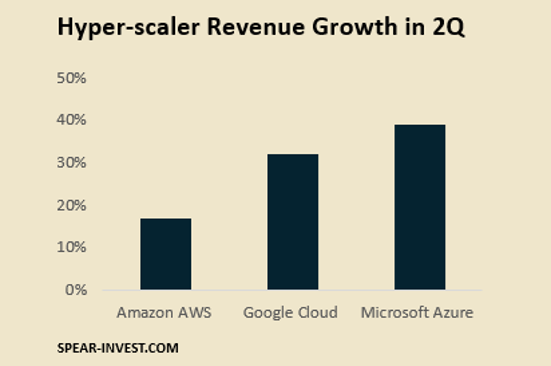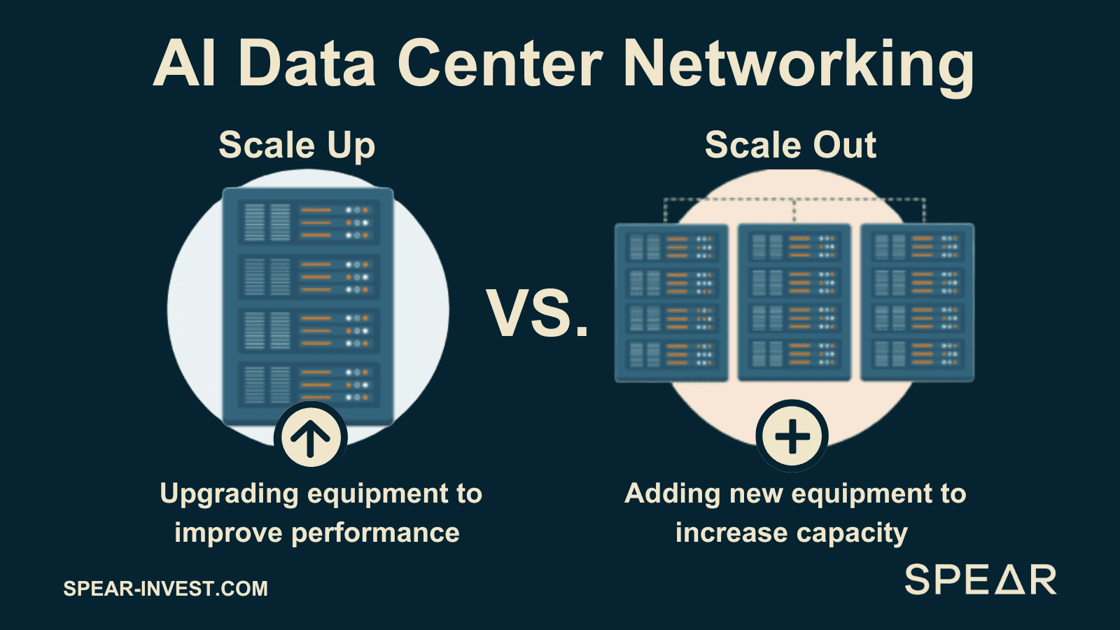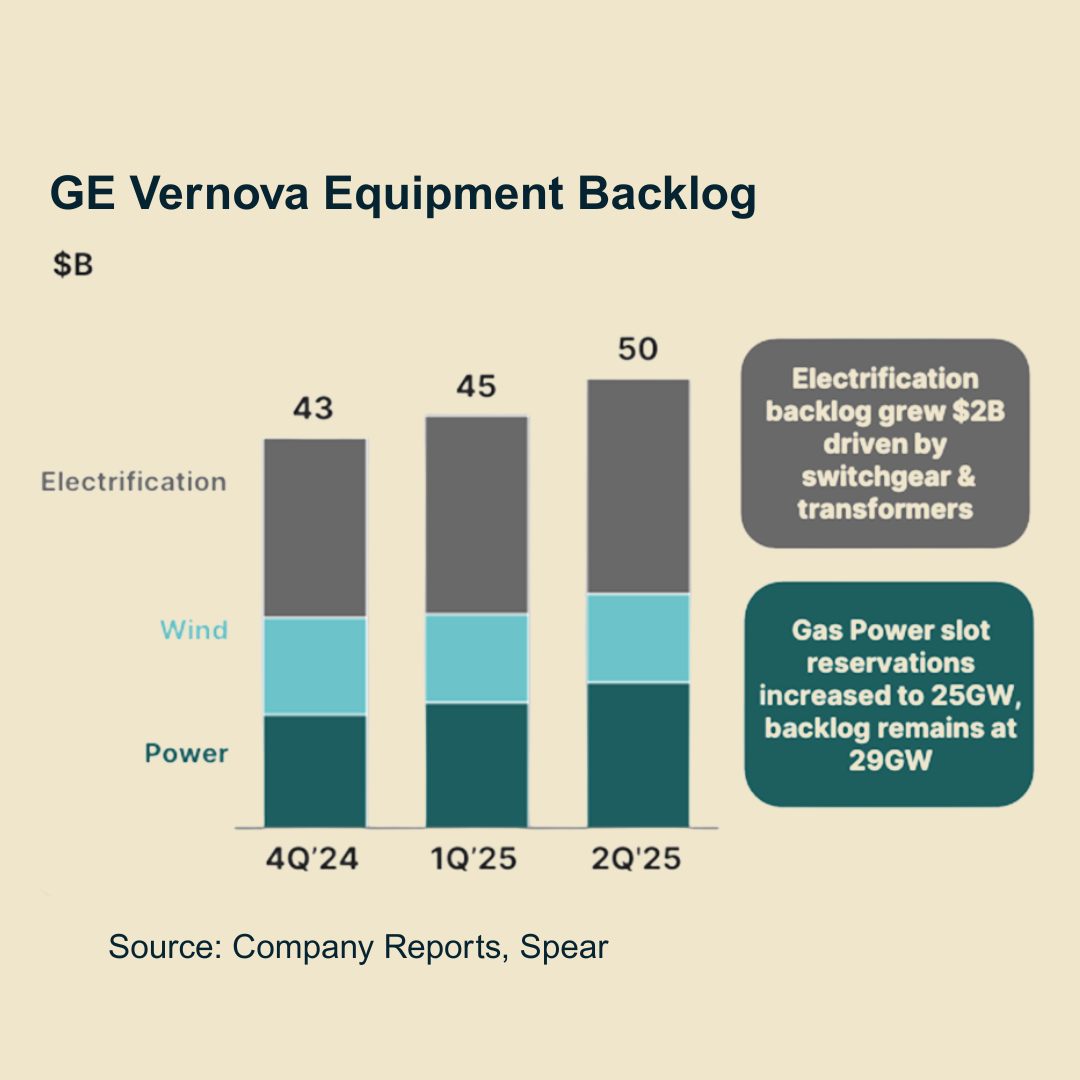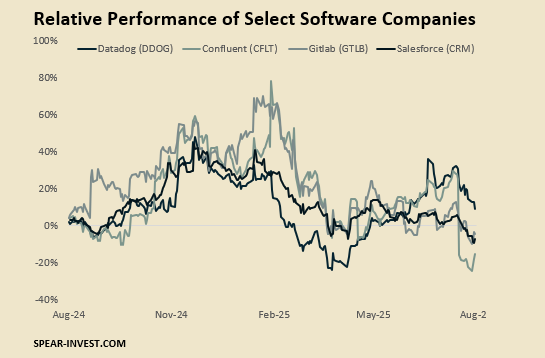Companies are reporting blowout earnings. Here are the key things we learned this earnings season:
1. Hyperscaler Capex Revisions Soar
The big revisions this quarter came fromGoogle and Meta, with Microsoft and Amazon right behind. The key point was that whoever is growing the capex the most is able to surprise the most in terms of results, which puts pressure on the hyper-scalers to keep investing.
-
Meta: Meta Platforms revised its 2025 capex guidance to a range of $64–72 billion, reflecting a 20% increase from its earlier forecast of $60–65 billion.
-
Alphabet increased its 2025 capex guidance to $85 billion, which is about 40% higher than the original estimate of $60 billion for the year. Google Cloud grew an impressive 32% YoY on a ~$54B run rate.
-
Microsoft Azure: grew an impressive 39% YoY on a ~$86B run rate. The company noted that while they were able to bring more capacity online in the quarter, they remain supply-constrained.
-
Amazon (AWS): growth lagged behind peers, only growing 17% on a $123B run rate

2. Networking Stocks Stood Out
Networking stocks such as Arista Networks, Astera Labs, and Credo reported blowout results.
There were many skeptics going into the earnings reports, and the main point that investors missed was that while Nvidia is aggressively growing its networking business, the size of the pie is growing even faster.
There is not only an opportunity on the "scale-up" side but also on "scale out", which is not a big focus area for Nvidia.
We sized up these investments during the pullback as they offered compelling risk rewards.
3. Physical Data Centers Will Drive The Next Leg Of Growth
If we step back, the most significant upside revisions this quarter came from companies involved across the value chain, especially the ones leveraged to building physical datacenters.
GE Vernova, a supplier of gas turbines, is a prime example. The company’s Power orders rose 44% y/y organic in 2Q, or a 1.49x book-to-bill.
The tariff scare in the first half of the year created a solid entry point for power equipment and power generation stocks as these companies actually benefit from re-shoring.
4. Software Becomes the New Battleground
AI is shaking up many software business models, introducing another risk component to many companies. In the past, Software (SAAS) companies used to trade together. But AI is changing this and introducing another layer of uncertainty.
Companies that have evolved into platforms from point solutions, such as Palantir and Cloudflare continue to perform well. These platforms are essential for businesses to leverage and build AI.
On the flip side, companies like Datadog, Confluent, Gitlab (GTLB), Salesforce haven’t been able to scale their AI-based product at the pace that the market was expecting.
As risks increased, we downsized and exited many of these opportunities and are closely watching how each one will position itself to win or lose in the new age of AI.
5. Industrial Demand Could Surprise in 2026
While data center infrastructure has been going through a boom, general industrial demand has been muted.
End markets such as autos, housing, and even automation have been going through a downturn. If you analyze prior cycles, this is very uncommon. The old playbook used to be that "early cycle" sectors such as autos and housing lead out of a downturn, but with rates >4% for the 10Y, that has been very difficult.
Companies like ON Semiconductor, Power Integrations, Coherent all surprised to the downside and guided to lower industrial demand, each company for a different reason.
As we look forward to ’26 with potentially lower interest rates and multiple large re-shoring projects, this is one area that could surprise to the upside and something we are closely watching.
